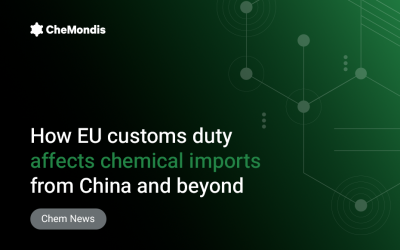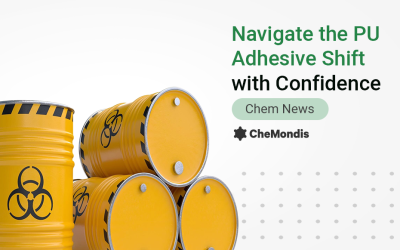For the second time this year, we are hosting our CheMondis Digital Summit. The event is planned for one day and takes place online on November 4th, 2021. Therefore, our preparations are currently running on full speed.
But what does it take to organize such an online event? We share our best practices, tips and tricks around the event and project planning. If you want to have a look at the lineup or buy a ticket before reading this article, you can do that by clicking the button below:
When it comes to the organization of such a big event, we generally recommend going through a step-by-step planning. Of course, there are different approaches and best practices. However, this is how it works best for us:
1. Defining the event goals
2. Creation of the concept
3. Organization of the event
4. The Event Day
5. Taking care of the follow-up tasks
Where lies our focus in each of the individual steps? When do we start with the individual phases and what are our biggest learnings so far? Sit back and read through it: we summarized it for you in the following sections.
Defining the Event Goals.
Usually, this is the very first step for us when starting with the preparations. No matter if it’s the 2nd or 3rd time we are hosting an event. As we re-evaluate our business goals every quarter and flexibly adapt them to the market, it is not unusual that we have 3 different goals for the same event – even if we host it several times.
When it comes to defining goals, there are different approaches. One common method is the SMART-goals method:
S = specific (goals must be clearly defined)
M = measurable
A = appropriate (reasonable for what is to be achieved)
R = realistic (the achievement of the goal must be possible)
T = terminable (deadline must be achievable)
We like to create our goals accordingly to this concept. Within CheMondis, we pay particular attention to making goals measurable by means of KPIs (Key Performance Indicators) and making results comparable. Thus, we would like to go into this point in a bit more detail.
Event KPIs are set up at the very start of the planning process. To do this, we usually look at the achievement of goals from the previous event and our internal KPIs. It is important to ensure that the goals are ambitious but also realistic. This balance must be maintained. In addition, it should always be possible to keep track of everything. Setting 3-5 goals is recommended.
Creation of the Concept.
Once the goals are defined, we start the creation of the concept, which is significantly influenced by our goals. First, of course, the question of the budget should be clarified, because many points of the concept will depend on it.
Now it’s a matter of going into the exact planning of the conditions – in our case, we start with the leading topic. We usually base this on current topics, occasions, events that are interesting for our target group. For example, in the past we had a paints & coatings edition, a digitization special and currently we are planning a sustainability & innovation edition. As soon as the leading topic is set, we go into more detail.
Starting from the leading topic, we define sub-topics for the individual streams. In doing so, we try to find possible subtopics. This will be particularly important later when researching suitable speakers.
Conceptually, it also goes to the planning of the formats. Which event formats are best suited to the content? Workshops? Roundtables? Talks? How long should the individual sessions be? What is a good number of slots?
Since in our case it is an online event, our location is an online event tool. What requirements do we have for the tool and which provider is best suited for this? Where do we get the best price-performance ratio?
As soon as we have found answers to those questions and have set the framework of the event, we can continue with the detailed planning of the content.
Organization of the Event.
A full day event with 3 streams and over 20 talks from external speakers requires careful pre-planning. Of course, it’s not just one person doing it alone. For our summit preparations, we have put together an interdisciplinary team. It consists of marketing experts, designers, and business development managers.
About 3 months before the summit, we start with weekly meetings, which we use to work out certain questions together. Of course, we also have a project plan in which all tasks and milestones are scheduled.
During the organization phase, it is time to get down to the details! The concept on paper is put into action. Potential speakers are identified and contacted, slots coordinated, marketing materials designed, the event page built, attendees invited…
Our internal deadline to be ready with everything is about 2 weeks before the event to have an emergency buffer for unwanted surprises.
The Event Day.
And then the time has come. The day of the event. The day before, we calmly prepare the technology and test everything to make sure that everything works properly. On the event day itself, we meet in the office about 1.5 hours before the official start of the first session. Then we have breakfast with everyone from the task force, but also moderators and CheMondis’ speakers. Afterwards there will be a final briefing for the day and a briefing on the location. Everyone grabs a last coffee and then it’s time to go.
What we have learned in the past that it is necessarily important to have two firefighters who take care of the so-called emergencies – on the phone and by mail. Someone has misplaced his event password, can’t find his way around the event page, needs a special invoice and so on. If something goes wrong, it is usually not a problem if the participants are helped immediately. We want everyone to feel that they are in good hands and that we live up to our own quality standards. Therefore, it is very important to us to provide a good service here.
After the first 3 hours is the official lunch break on all streams and we have a little time to breathe. We order pizzas for the whole team and briefly discuss how things are going until it’s time to move on.
At the end of the day, we all come together for a short wrap up. How many participants were there? What specials were there? How was the feedback? Such an event always brings us forward as a team.
Afterwards we usuqlly have a delicious dinner in a great restaurant. We will take care of the office clean up and the follow up tasks another day…
Taking Care of the Follow up Tasks.
For us, after the Summit is as busy as before the Summit. The day after the event there is a lot to do, from thanking the speakers, writing invoices, taking advertisements offline and of course checking how far the goals we set at the beginning have been achieved.
During the week following the event, when everything is still fresh in our minds, we also have a feedback session with all participants, where we analyze feedback, note improvements, and collect ideas for a next event.
Now it is Up to You.
In this sense, we are looking forward to meet you on November 4th in one of our session! The registrations are still open.
For already registered CheMondis marketplace customers the registration for the event is free of charge. For all others: in the first ticket phase we offer early bird tickets for 49 EUR with a “buy one get two” special. *only available until end of October 2021.




